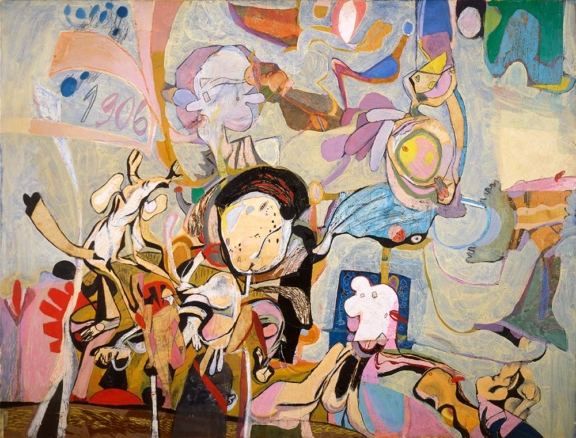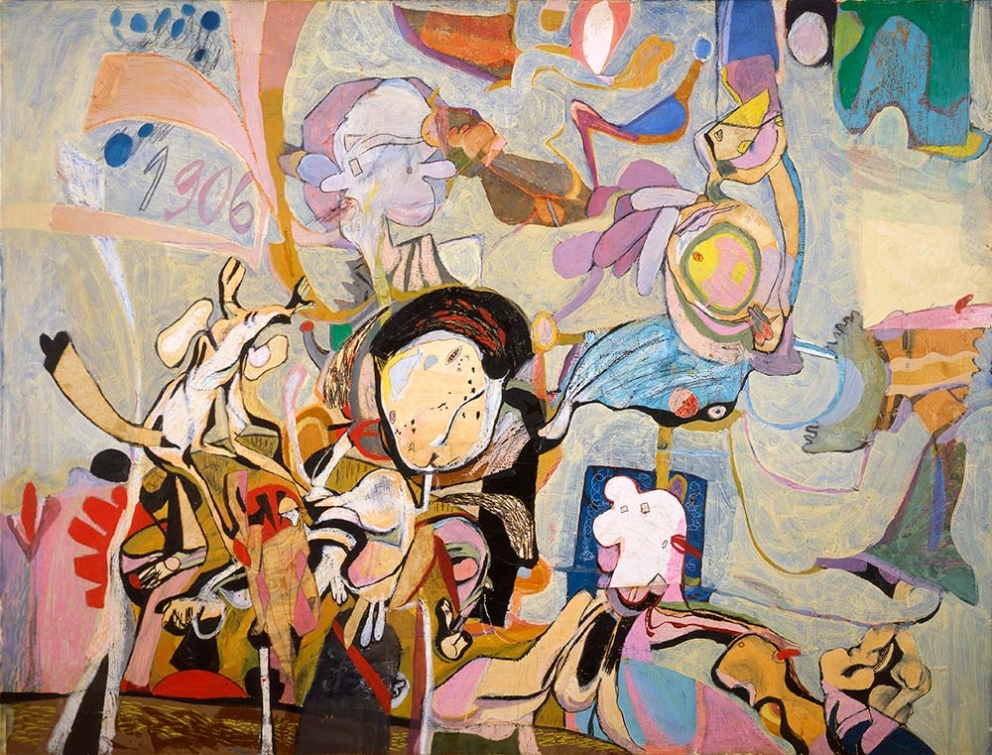The creation of images and stories has always been a form of pronunciation in the work of Paula Rego. She systematically investigates the plastic possibilities of painting, with the figurative and narrative construction of a moment emerging from the bodies and actions of the characters portrayed. Above all, Rego has a way of understanding and reflecting upon the world, a personal and sensitive positioning in relation to the issues and events which, for different reasons, have stimulated or unsettled her. While some of these thematic lines recur, the 1960s was a particularly fruitful period for the formation of a discourse through which a more politicised strand invested Rego’s work. The artist attributes such attention to her upbringing in contact with both Portuguese society and British daily life, where information circulated without the restrictions experienced in Portugal at the time, along with the type of education received within an especially interested family. Incidentally, Paula Rego refers repeatedly to the presence of the father as a responsible and motivating figure. She created Salazar a vomitar a Pátria [Salazar Vomiting the Homeland] in 1960 followed, five years later, by the Cães de Barcelona [Dogs of Barcelona], in which she takes account of the disturbing events occurring in Portugal and Spain. The painting Retrato de Grimau [Portrait of Grimau] was also set within this context and produced, similarly to the other works of this period, through a formally intense composition, disturbing due to its visceral quality and the firmness with which emotion is transformed, through drawing and collage, into an image. The artist expresses her position, seeking to find a voice, to resist impunity and disinformation, without being committed or moving away from the purposes of her pictorial research, giving a body to stories which organise the perceptible chaos of the world: “It’s like a person, a story. The painting developed as the stories progressed. The painting drove the story; the story drove the painting. Until the end was reached. The last corner was filled in, the story finished”, she would say in an interview years later.
In this painting, Julián Grimau, the protagonist of one of the most tense and turbulent moments in contemporary Spanish political history is portrayed. His biography, in particularly the circumstances in which his life came to an end, would intersect with that of another key protagonist of the period, General Humberto Delgado, a military man born in 1906, assassinated at the Spanish border by the Portuguese political police in 1965 for seeking to overthrow Salazar’s regime in the 1958 elections. Like other works produced in these years, it is the aspect of dismemberment which is brought to the fore – exposed and recomposed. The figures are drawn, clipped, truncated, glued and painted again, mixing the gestures of the artist with other materials, such as sheets of newspaper. There is a figurative and narrative concentration in the lower section of the piece, enhanced by more intense chromaticism. Nevertheless, the most enigmatic image is perhaps the dual, two-headed figure almost centring the composition. The date is suspended alongside, like a memorial sign in this palimpsest. It is not surprising that Grimau’s death shocked Paula Rego. Grimau had a police background and joined the Communist Party shortly after the start of the Civil War – the reason for which he was denounced and detained for interrogation in November 1962. Subjected to torture by the police, he was thrown out of a window, finishing in a coma with extremely severe injuries, while the regime sought to justify the act as an unsuccessful suicide attempt and issued a death sentence for the prisoner. In an action of unusual dimensions, the international community united in protest against the decision, with personalities from various spheres of political and public life demanding clemency from Franco and his information minister, Manuel Fraga. Coverage of the event crossed the Spanish border, motivated above all by the effectiveness of the national and international political resistance movements. Despite this contestation, Julián Grimau was executed on the morning of 20 April, 1963.
Ana Ruivo
May 2013

